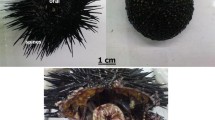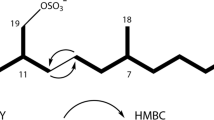Abstract
Hemolysis refers to the breakdown of erythrocytes/red blood cells (RBCs). This results in the destruction of erythrocytes, releasing hemoglobin from within RBCs into the blood plasma. In vitro hemolysis is the result of pre-analytical causes associated with parameters including extreme temperature, sample collection and handling, jarring transportation techniques, delayed processing, and later prolonged storage. Hemolytic assays are performed on bacteria including Actinomycetes after the extraction of secondary metabolites with the most potent solvent. Later, they are screened for hemolytic activity against bacterial and fungal pathogens in aquaculture.
Access this chapter
Tax calculation will be finalised at checkout
Purchases are for personal use only
Similar content being viewed by others
References
Mogrovejo DC, Perini L, Gostinčar C, Sepčić K, Turk M et al (2020) Prevalence of antimicrobial resistance and hemolytic phenotypes in culturable arctic bacteria. Front Microbiol 11:570
Norouzi H, Danesh A, Mohseni M, Khorasgani MR (2018) Marine Actinomycetes with probiotic potential and bioactivity against multidrug-resistant bacteria. Int J Mol Cell Med 7:44–52
Jagannathan SV, Manemann EM, Rowe SE et al (2021) Marine Actinomycetes, new sources of biotechnological products. Mar Drugs 19(7):365
Bernal MG, Campa-Córdova ÁI, Saucedo PE, González MC, Marrero RM et al (2015) Isolation and in vitro selection of actinomycetes strains as potential probiotics for aquaculture. Vet World 8:170–176
Das S, Ward LR, Burke C (2010) Screening of marine Streptomyces spp. for potential use as probiotics in aquaculture. Aquaculture 305:32–41
Suthindhiran K, Kannabiran K (2010) Diversity and exploration of bioactive marine Actinomycetes in the Bay of Bengal of the Puducherry coast of India Indian. J Microbiol 50(1):76–82
Fatmawati U, Meryandini A, Nawangsih AS, Wahyudi AT (2010) Screening and characterization of Actinomycetes isolated from soybean rhizosphere for promoting plant growth. Biodivers J Biol Divers 20(10):2970–2977
Costa-Lotufo LV, Cunha GMA, Farias PAM, Viana GSB, Cunha KMA, Pessoa C, Moraes MO, Silveira ER, Gramosa NV, Rao VSN (2002) The cytotoxic and embryotoxic effects of kaurenoic acid, a diterpene isolated from Copaifera langsdorffii oloeo-resin. Toxicon 40:1231–1234
Saurav K, Kannabiran K (2012) Cytotoxicity and antioxidant activity of 5-(2,4-dimethylbenzyl)pyrrolidin-2-one extracted from marine Streptomyces VITSVK5 spp. Saudi J Biol Sci 19:81–86
Malagoli D (2007) A full-length protocol to test hemolytic activity of palytoxin on human erythrocytes. Invert Surviv J 4:92–94
Author information
Authors and Affiliations
Corresponding author
Editor information
Editors and Affiliations
Rights and permissions
Copyright information
© 2023 The Author(s), under exclusive license to Springer Science+Business Media, LLC, part of Springer Nature
About this protocol
Cite this protocol
Mondal, H., Thomas, J., Amaresan, N. (2023). Assay of Hemolytic Activity. In: Thomas, J., Amaresan, N. (eds) Aquaculture Microbiology. Springer Protocols Handbooks. Humana, New York, NY. https://doi.org/10.1007/978-1-0716-3032-7_24
Download citation
DOI: https://doi.org/10.1007/978-1-0716-3032-7_24
Published:
Publisher Name: Humana, New York, NY
Print ISBN: 978-1-0716-3031-0
Online ISBN: 978-1-0716-3032-7
eBook Packages: Springer Protocols




